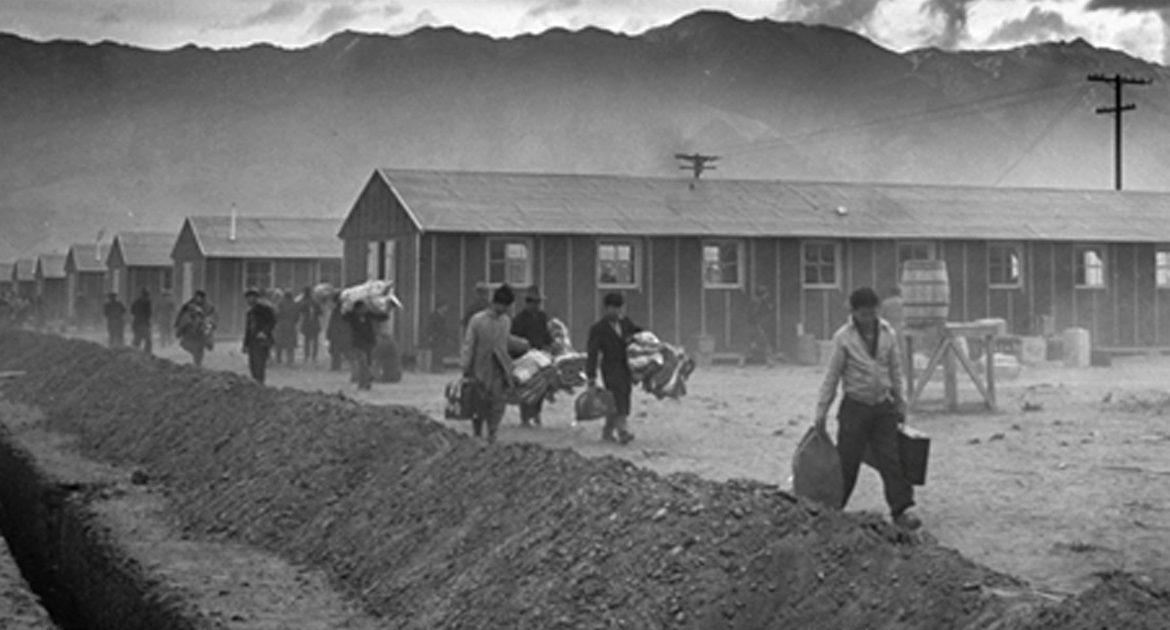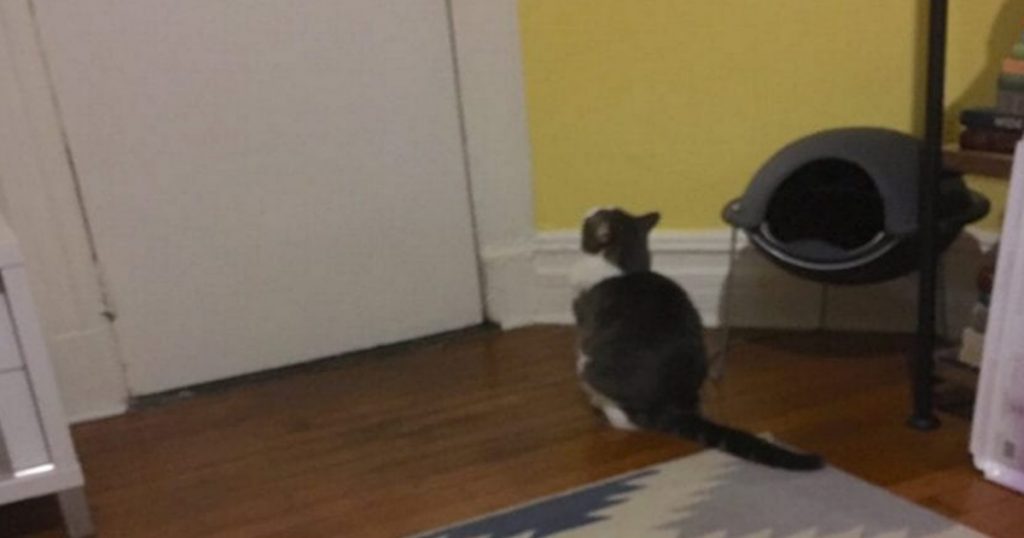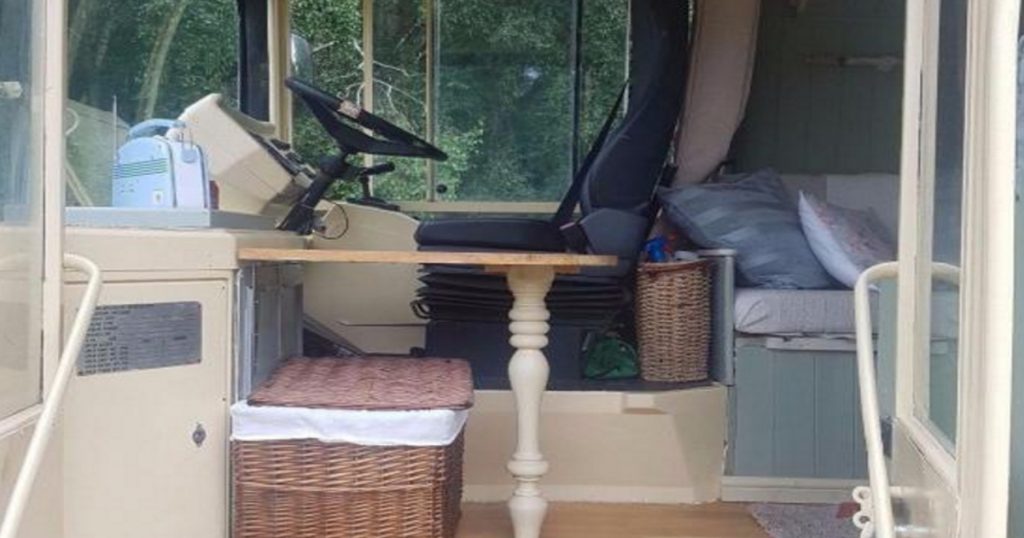During World War II, the United States detained more than 110,000 Japanese-Americans, regardless of their citizenship, and relocated them to one of 10 designated internment camps for the duration of the war. It is considered to have been one of the largest violations of civil liberties in the nation, and in 1988, Congress issued a formal apology and offered restitution to the survivors and their families.
Here’s a chilling look back at that period:
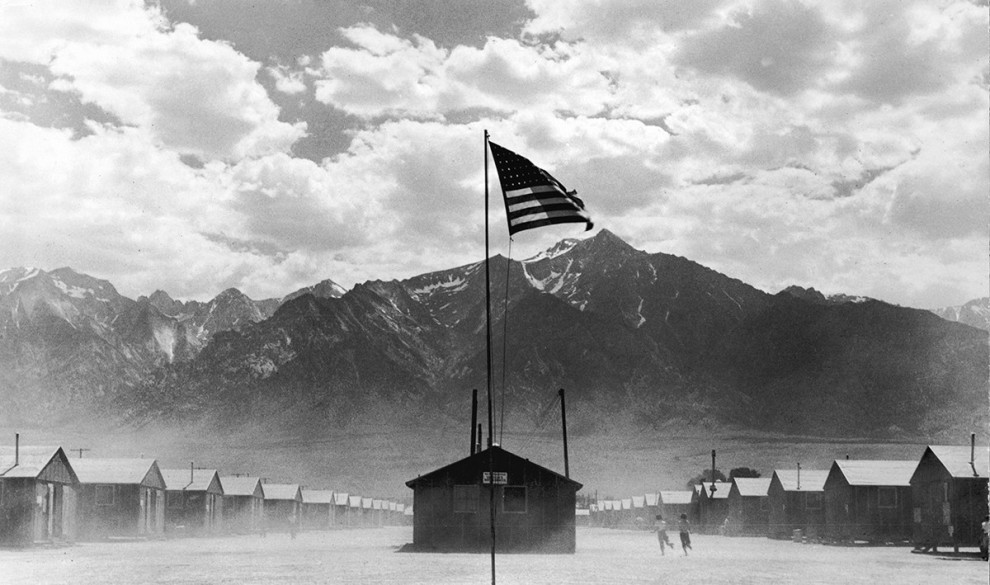
A US flag flies at a Japanese-American internment camp, surrounded by mountains in Manzanar, California, during World War II in July 1942.
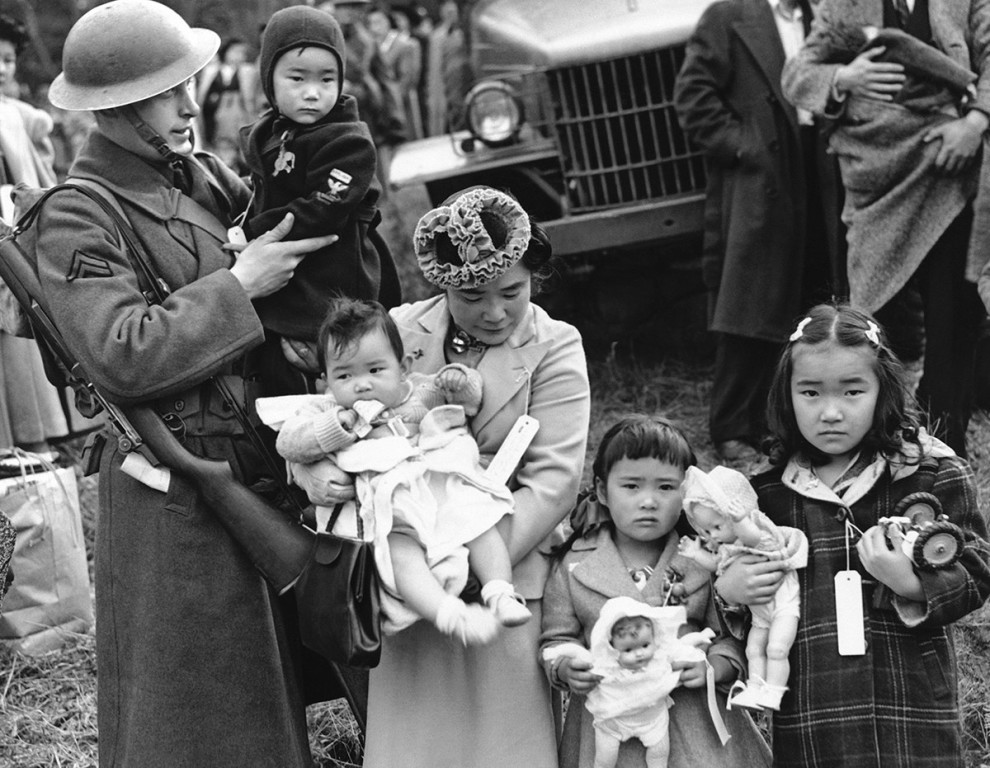
Shigeko Kitamoto and her children are evacuated, along with others of Japanese descent, from Bainbridge Island in Washington state, on Mar. 30, 1942. Cpl. George Bushy, member of the military guard that supervised the departure of 237 Japanese-Americans for California, gives her a hand with the youngest.
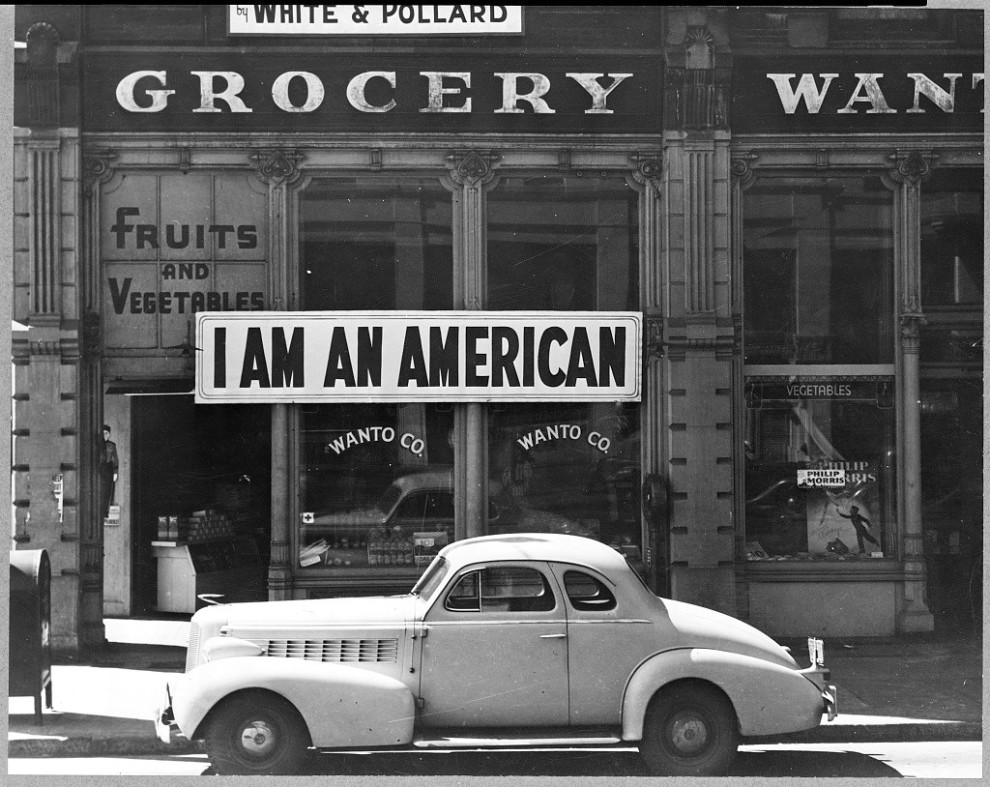
A large sign reading “I am an American” is placed in the window of a store in Oakland, California, in March 1942. The store was closed following orders to persons of Japanese descent to evacuate from certain West Coast areas. The owner, a University of California graduate, was to be housed with hundreds of evacuees in War Relocation Authority centers for the duration of the war.
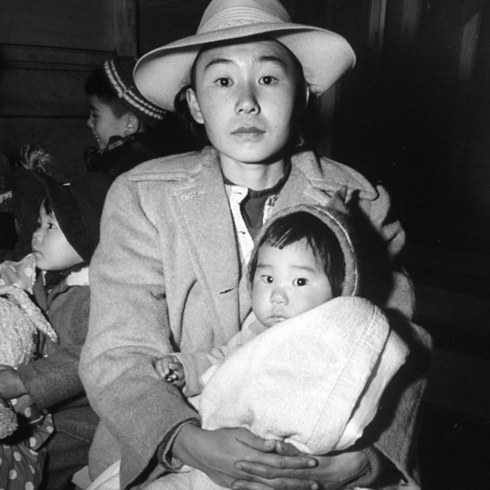
Luggage of Japanese Embassy staff (left) waits on the street as staffers leave Washington, DC, for a Hot Springs, Virginia, internment camp on Dec. 29, 1941. A woman and child (right) arrive at the internment camp at Tule Lake, California.
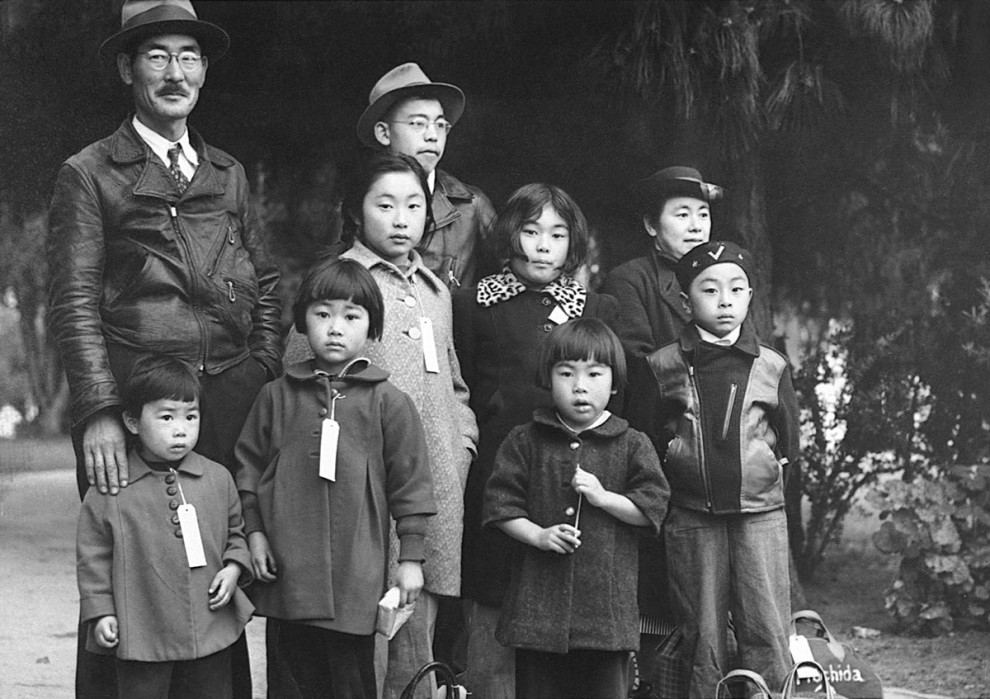
The Mochida family wait for a bus that will eventually take them to an interment camp in Hayward, California, on May 8, 1942.
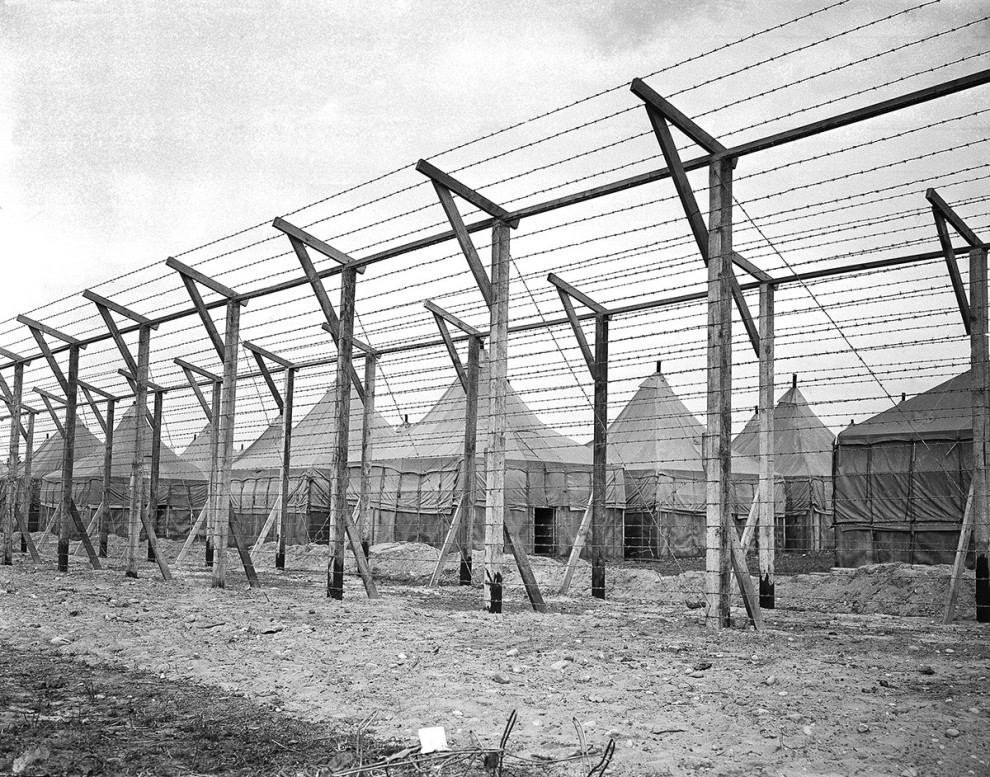
The barbed-wire fences of Camp Upton, a Japanese internment camp in Long Island, New York, Nov. 3, 1941.
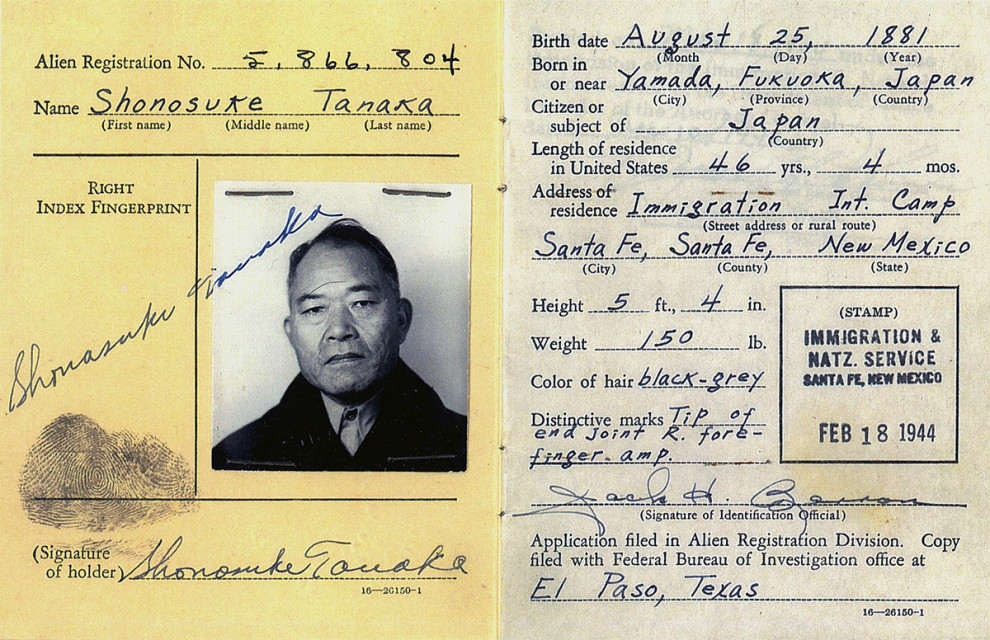
This Feb. 18, 1944, image provided by the Tanaka family shows shows the World War II alien registration card for Shonosuke Tanaka, who was among scores of people of Japanese ancestry held in captivity during the war.
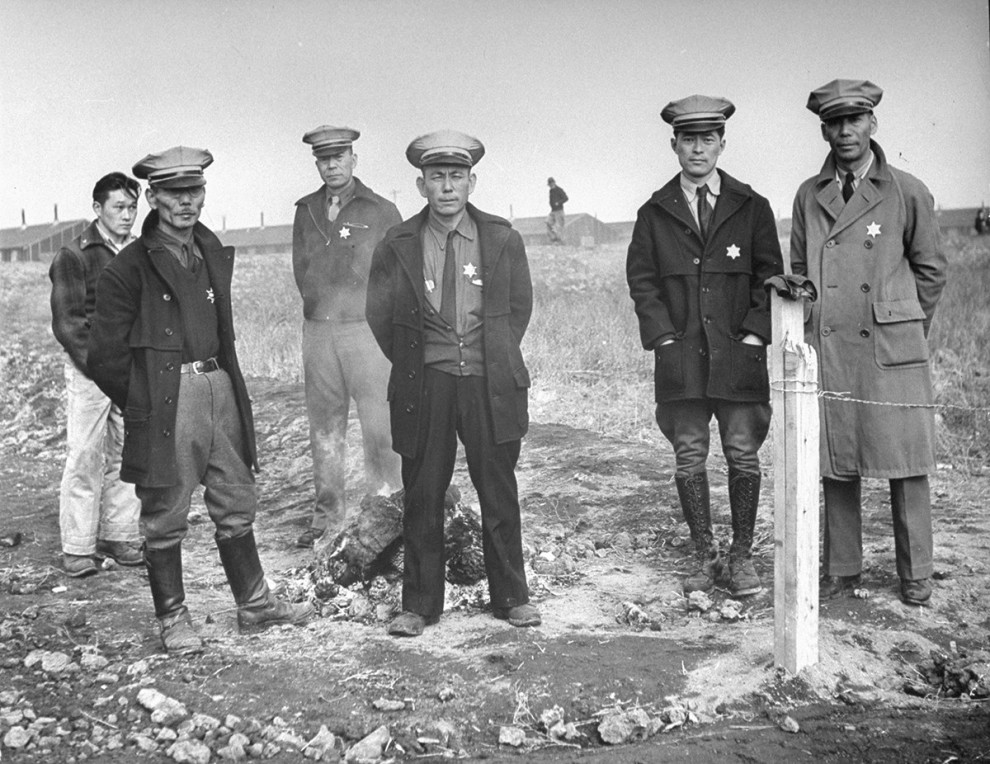
Guards at the Japanese internment camp in Tule Lake.
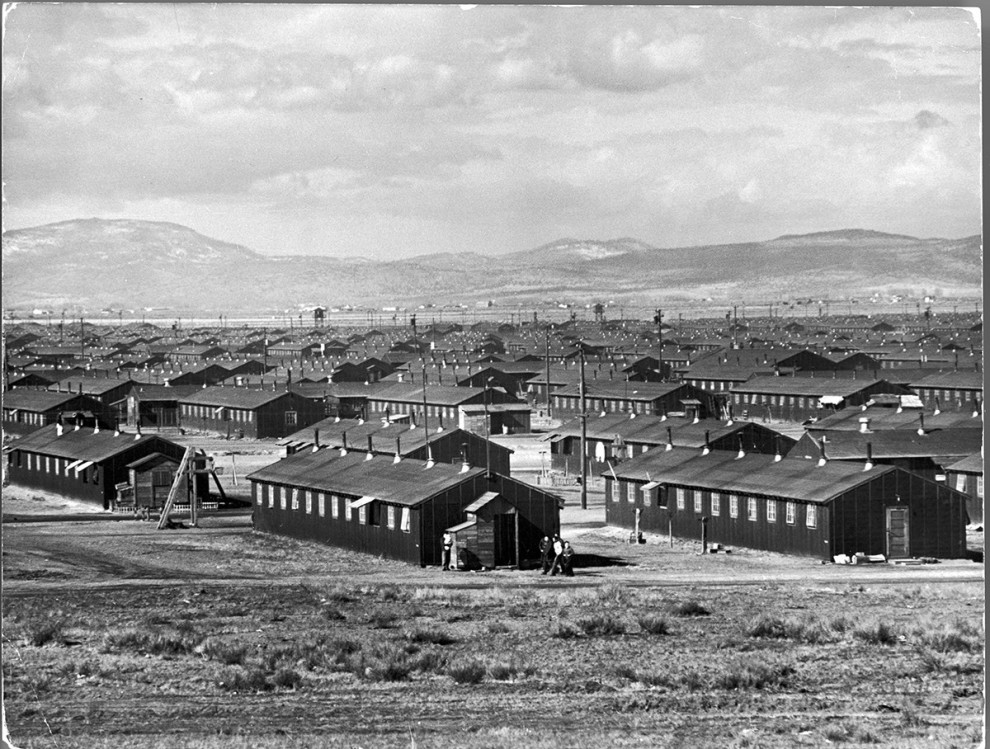
Family housing at the Japanese internment camp in Tule Lake.
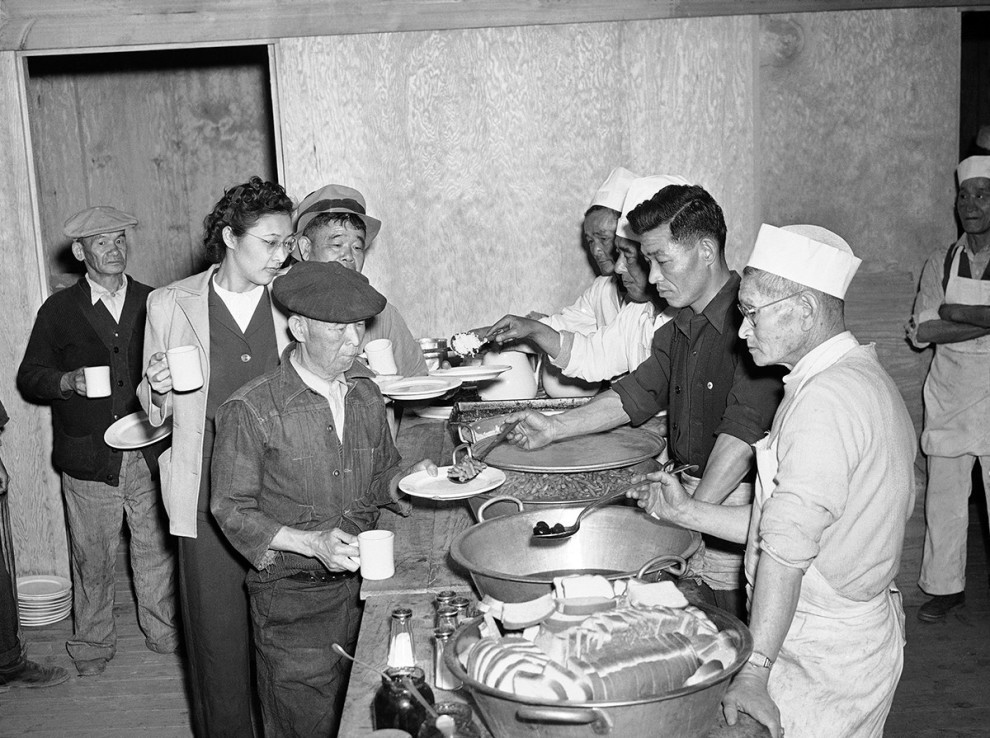
Japanese-Americans removed from their Los Angeles homes line up at the government’s alien camp in Manzanar on March 23, 1942, for their first meal after arrival at the camp.
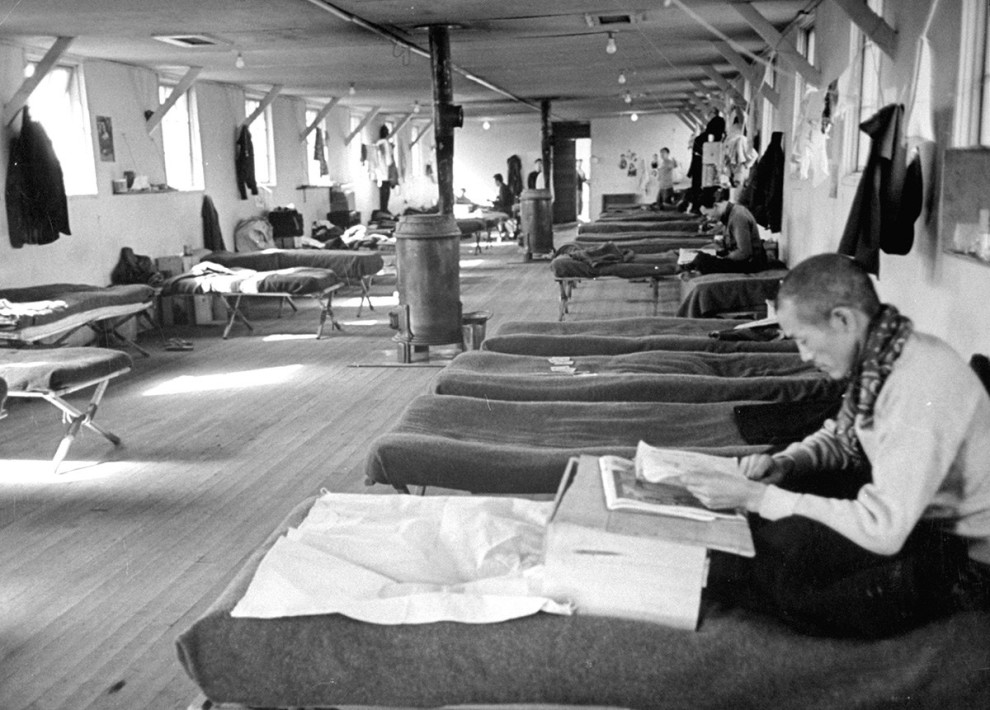
The sleeping quarters at the Japanese internment camp in Tule Lake.
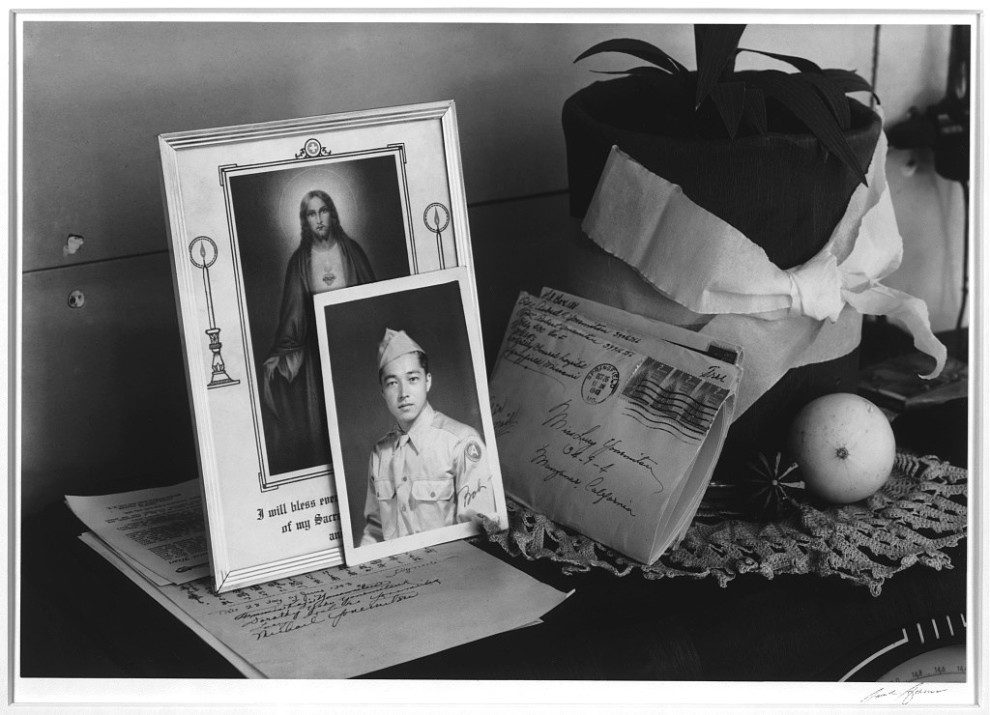
Pictures and personal mementos rest on a bedside shelf at the Manzanar Relocation Center.
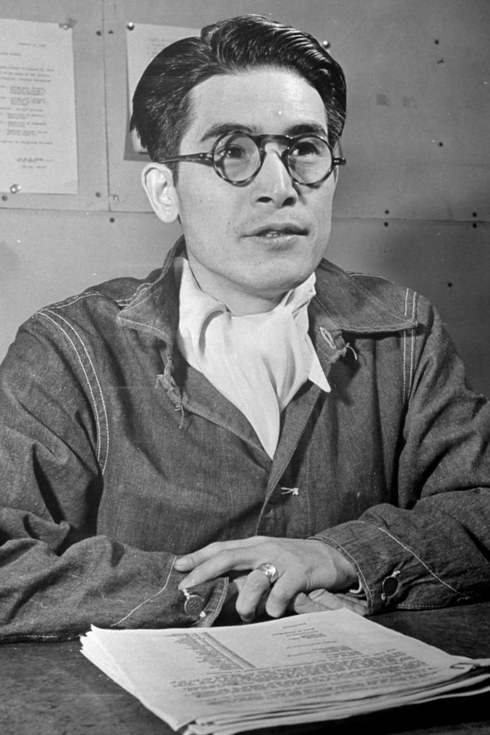
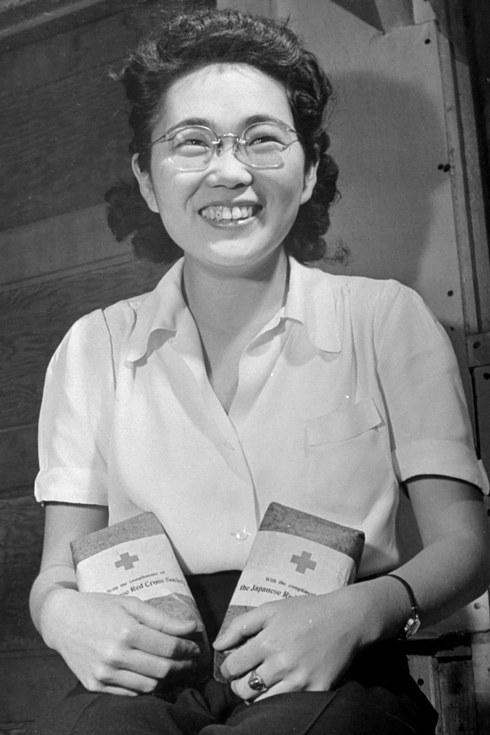
Mr. Akitsuki (left) pauses for a portrait at the Japanese internment camp in Tule Lake. A Red Cross worker (right) administers aid at in Tule Lake.
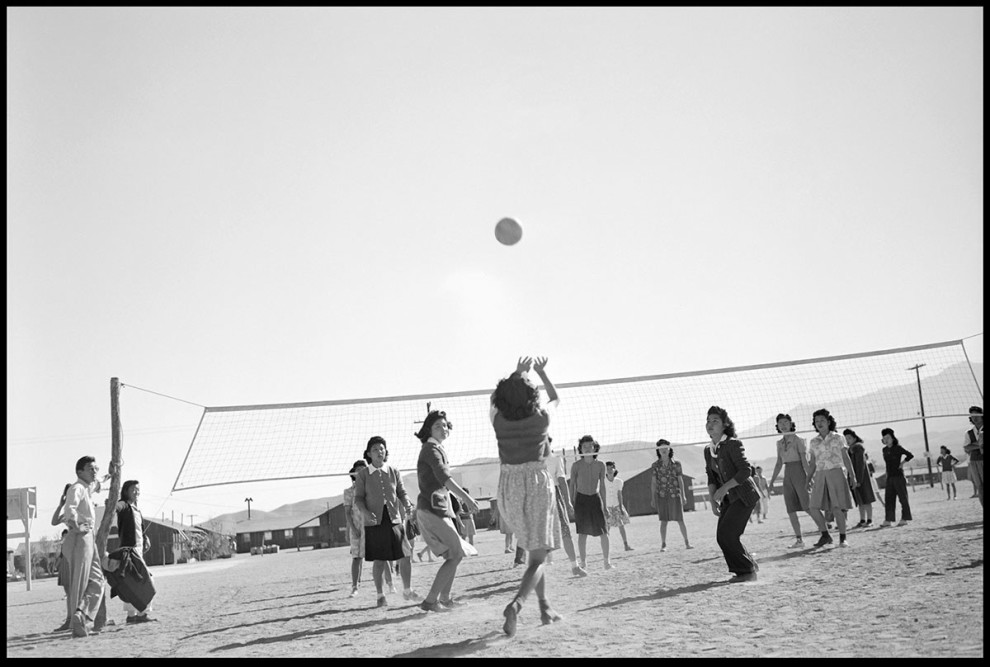
The ladies of the Manzanar internment camp play a game of volleyball to pass the time.
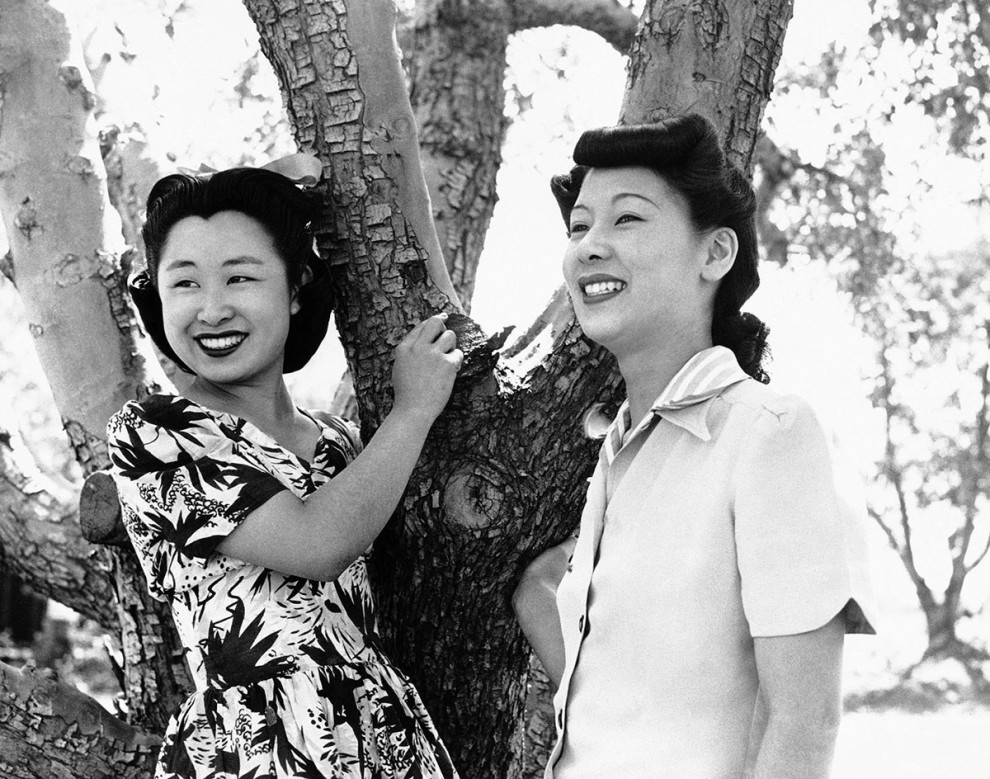
Florence Yamaguchi (left) and Kinu Hirashima, both from Los Angeles, stand under an apple tree at the War Relocation Authority center in Manzanar in June 1942.
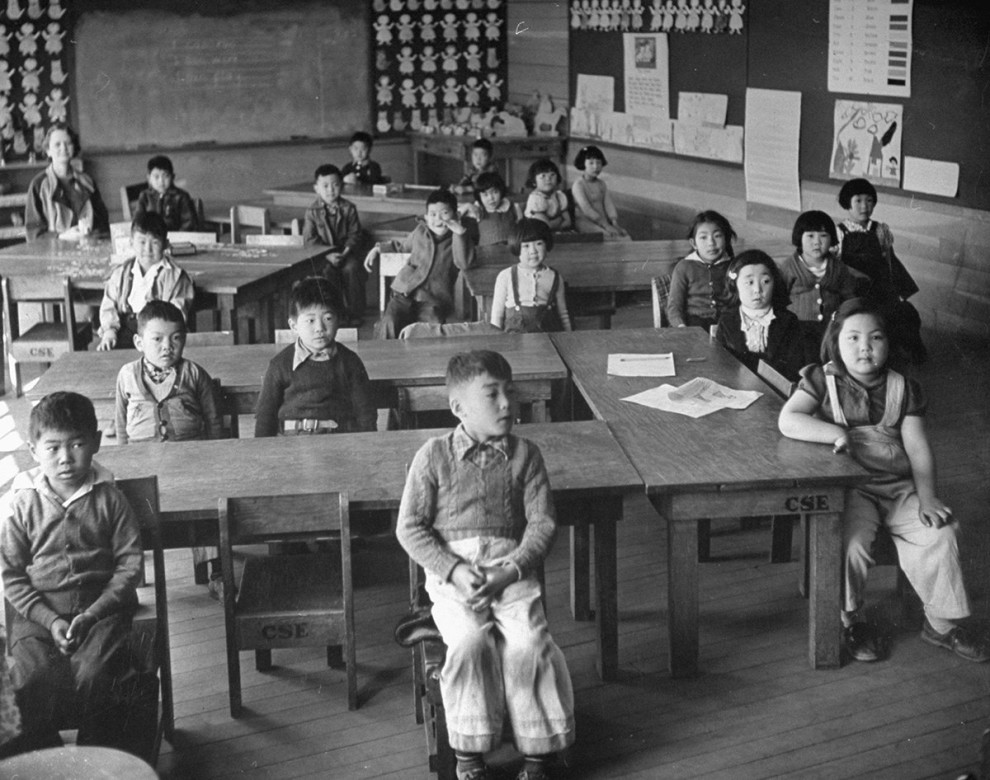
A group of schoolchildren attend class at the Japanese internment camp in Tule Lake.
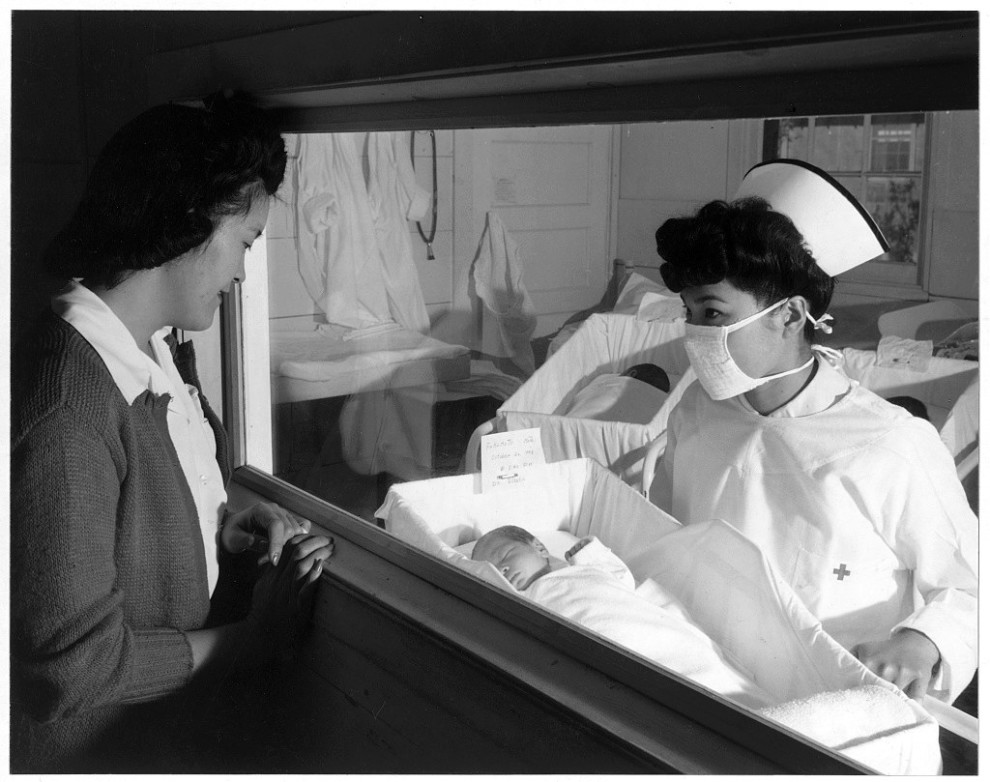
Nurse Aiko Hamaguchi shows a newborn baby to her mother at the Manzanar Relocation Center.
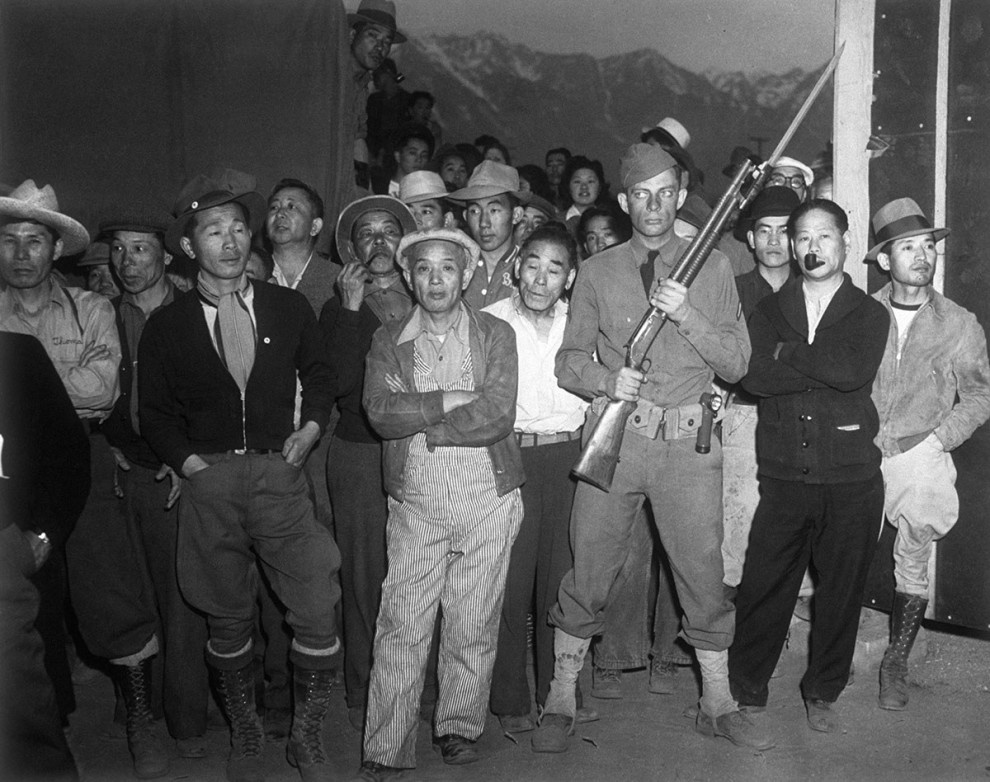
An American soldier guards a crowd of Japanese-American internees at the internment camp in Manzanar.
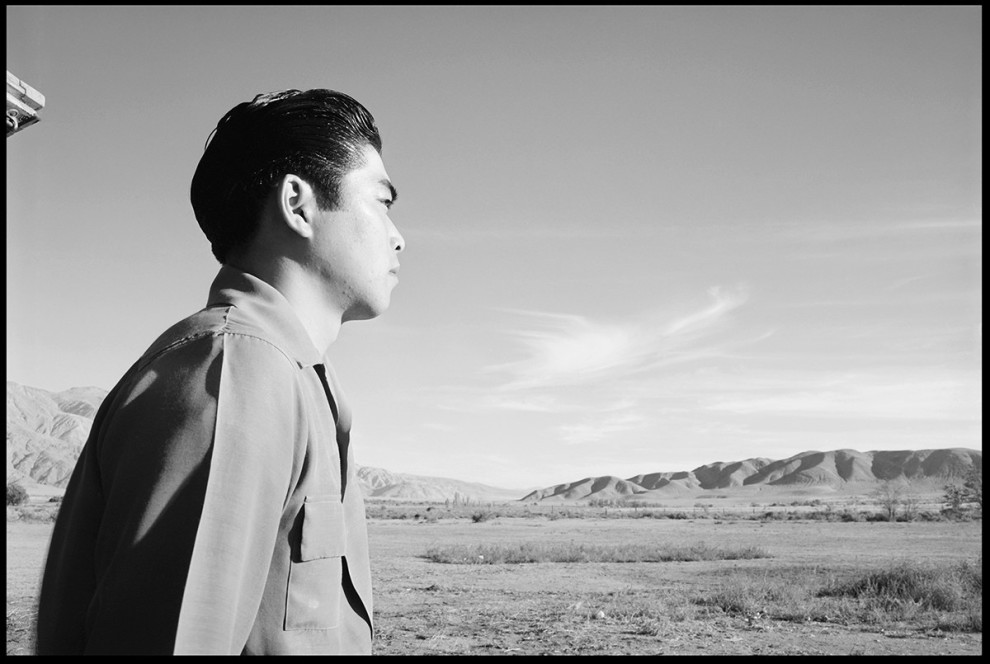
A young Japanese man looks out toward the California desert from the internment camp in Tule Lake.
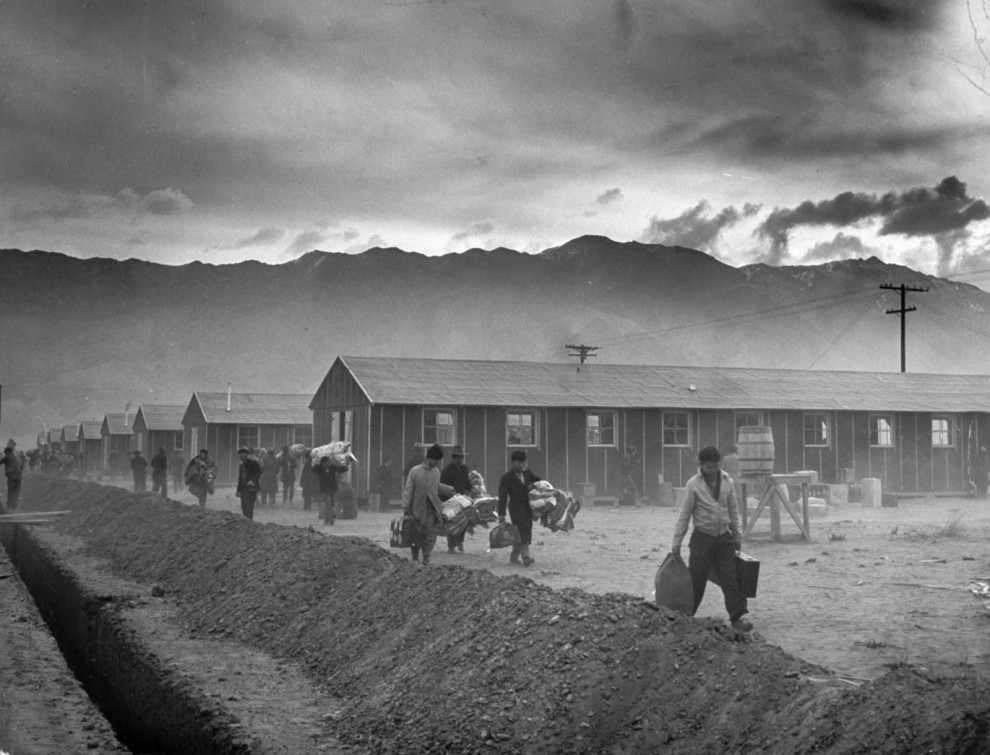
A group of Japanese-Americans arrive at the Manzanar internment camp carrying their belongings in suitcases and bags on March 21, 1942.
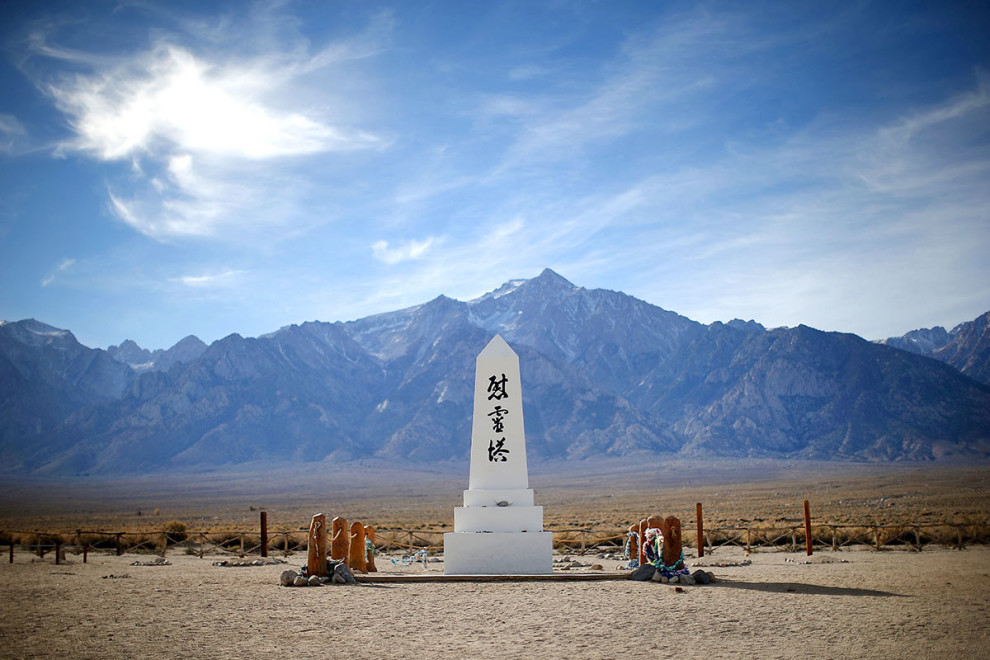
A monument honoring the dead stands in the cemetery at Manzanar National Historic Site on Dec. 9, 2015.
